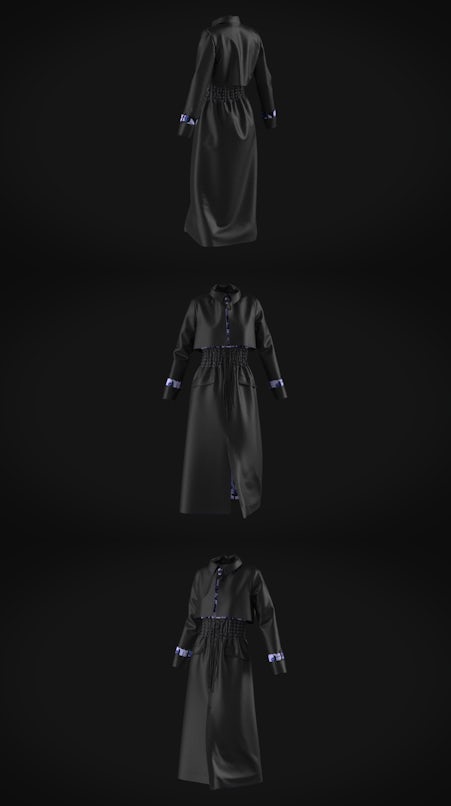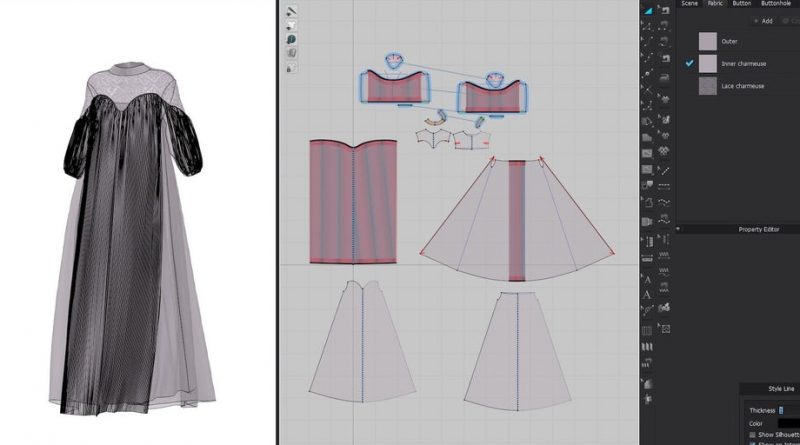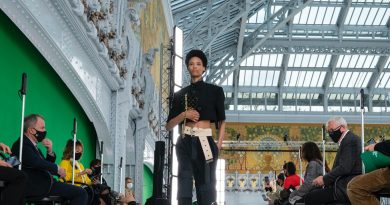At CLO Virtual Fashion, Digitising the Design Process to Drive Transformation | Sponsored Feature
NEW YORK, United States — The practice of physical sampling, creating prototypes and shipping materials are a few ways in which the apparel and footwear industries contribute to roughly 8 percent of the world’s greenhouse gas emissions, according to consultancy Quantis. Indeed, with the younger consumer cohorts now more concerned than ever to buy from transparent, responsible brands, the need to weave sustainability into the product development and design process is an increasingly important credential.
With more than 15 years of research, CLO Virtual Fashion offers an end-to-end solution through the virtual simulation of garments, while supplying data on wider designs and trends to its partners. The technology visualises users’ creations with the ability to create unlimited graphic placements, colourways and engineered print layouts, while accurately emulating drape-sensitive fabrics, reducing lead time for an average of 27 hours compared to 37 days without CLO, and offering a 55 percent sample adoption rate compared to 15 percent without CLO.
Complementing the 3D design software for apparel designers and brands, CLO also offers digital touchpoints and services throughout the product development and design process such as Benefit by CLO, a virtual fitting platform, and CLO-SET, a collaboration and data asset management platform for virtual garments.
Driven by its 172 employees in offices across New York, Los Angeles, Madrid, Munich, Seoul, Shanghai, Hong Kong and Bangalore, CLO counts Adidas, Macy’s, Hugo Boss, Inditex, Levi’s and Bestseller among its clientele.
Now, BoF sits down with the platform’s chief executive, Simon Kim, to hear about how the 3D fashion design software company is pioneering the digitisation of the fashion design process and how eliminating unnecessary physical sampling and waste, while also reducing production lead times, design inaccuracies and overhead, are powerful change agents in our industry’s transformation.
How did the CLO business and technology come about?
I met the co-founders, Jaden [Oh] and [JH] Boo, in 2008 when I was working as a venture capitalist. Jaden was a PhD graduate and the inventor of the fabric simulation engine algorithm. When he developed the prototype, he let his students use it for fun and to test it out. He saw them enjoy using it and that was the start of figuring out how he could let more people use this software and algorithm while having fun doing it.
Having fun building with this technology is at the core of our business, while simultaneously envisioning how it will change the world. So back in 2009, CLO Virtual Fashion was launched with a vision to change the world by connecting and converging real and virtual garments. We envision a world where every real piece of clothing is tagged to its own digital version and vice versa.
Saving time, money and waste is one of many results that come from using 3D technology.
I was mesmerised by the technology and how useful it could be. When CLO launched in 2009, there were already 3D apparel CAD softwares but there wasn’t 3D clothes simulation technology that was practical enough to be used daily in the actual design and development workflow. They didn’t seem to be fast enough, accurate enough or easy enough to use. It was not flexible to cater to designers, pattern makers and tech designers in a practical sense.
How was the technology designed?
Because it’s a design software, the users are creators, so we knew that it needed to be as intuitive as possible and to be expansive enough to design anything you want. If it takes two days to create a 3D outfit, what’s the point?
We went to talk to the users, to know more about them and their unique workflow — and in the fashion industry, every single company has a different workflow. Some companies might take 50 weeks to finalise their designs, others take five weeks. So, we needed to go into how and why each feature is used and how it can be improved, to really contribute to their daily workflow.

CLO Virtual Fashion designs | Source: Courtesy
It also enables greater collaboration too, because designers used to sketch something then hand it over to a tech designer, then to the factories. It was all based on handing over parts of the design process. Now, you can string all this expertise together. The factories, vendors, manufacturing and creation of a sample — we can gather all of those creativities, meaning that we can detect flaws and improve the designs early on.
How did you ensure it would meet fashion industry needs?
Our company has 70 3D designers, with experience in fashion design, tech design and patternmaking, so they are the first tier of users to test it all out. This helps create a natural relationship for users. They speak the language of pattern making and design; they went through the same challenges, so they get it. Through those relationships, we then gather the information on how to improve our services.
When our 3D designers go to clients, we ask them to bring in interested designers, patternmakers, tech designers and other creatives so we can talk to them first. We have “discovery days,” when people can come in and ask questions like, “how do you create this particular design and how long does that take if I have no patternmaking expertise?”
How does the technology facilitate users’ creativity?
I find it mind-blowing what users are able to create. We are a tool to help our users create cooler designs. We like to see our software as a Minecraft of fashion design. We want to be as expansive and versatile as possible.
For instance, physically, you might only have a few chances to try out different silhouettes. You mostly work with a limited number of fabrics. With computer programming, you can do multiple iterations in a matter of minutes — and it is just a drag and drop. If you want to try out a cotton jersey-based shirt in leather, you just click to change it. If you want to add a pocket, copy and paste.
So, it not only amplifies the creativity, but it can also transform the way you think. It offers the flexibility and time to experiment for the designers who may not have the capacity to change the pattern or fabric — and you don’t have the extra cost of doing it. Saving time, money and waste is one of many results that come from using 3D.
How can CLO help companies operate more responsibly?
Sustainability is a big issue and consumers have ever-increasing demands. We want more variety and more diverse designs but it needs to cater to that without burdening the people involved in the design development process and without burdening the environment.
We have never before had this data set of connecting body shapes into the design data.
Technology is the answer to this. All fashion companies need is a technology trigger like CLO so that it sparks up ideas and revolutionises the way they want to work more efficiently, more effectively and how they target audiences better. We are always surprised by how users use our software and technology.
What developments of CLO technology excite you most for the future?
What excites us most is empowering creators and the end consumer by ensuring the full use of the digital garment. We’re at the beginning stages of making this possible through our platform called CLO-SET. Through CLO-SET, many users are already enjoying the benefits of real-time collaboration with the whole global supply chain, with full use of the archive of digital garments and its data.
We are also working on a virtual fitting application where the end consumer will be able to create their avatars and wear, style and play with garments online without going into physical fitting rooms. This will not only revolutionise the way we consume clothes, but it’ll also provide a direct connection between the creators and the consumers.
For example, if you designed a shirt and it was tried on by consumers, let’s say 80 percent of those consumers were taller than 170 centimetres and had longer arms. You can learn from that feedback. We have never before had this data set of connecting body shapes into the design data. I’m excited about the prospect of empowering designers to design better without ever creating a physical sample.
This is a sponsored feature paid for by CLO Virtual Fashion as part of a BoF Careers partnership.


